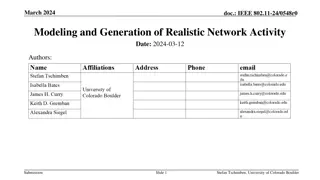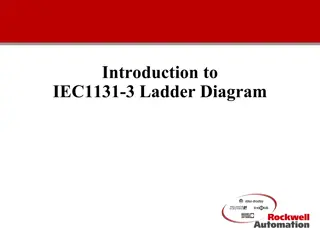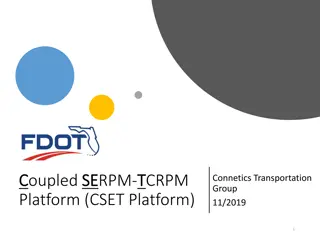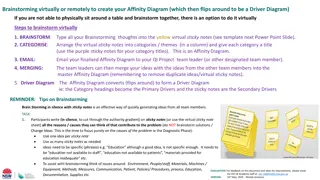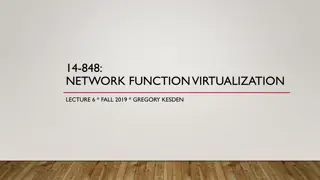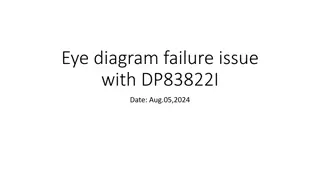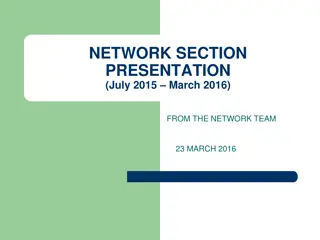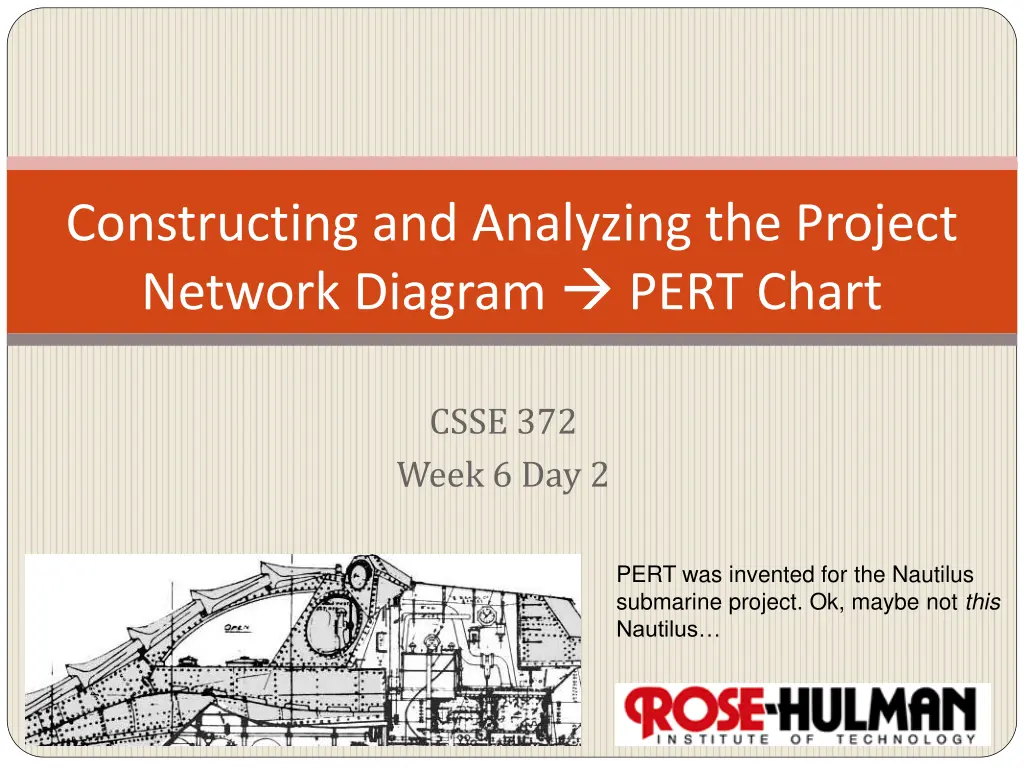
Project Network Diagram and PERT Chart Analysis
Learn about constructing and analyzing project network diagrams and PERT charts in CSSE 372 Week 6. Understand the definitions, critical path, slack, and activity sequencing. Discover the types of diagram methods such as Task-On-the-Arrow and Precedence Diagramming Method. Explore the uses of network diagrams in planning, implementation, and control. Gain insights into constraints, forward and backward passes, and critical path determination.
Download Presentation

Please find below an Image/Link to download the presentation.
The content on the website is provided AS IS for your information and personal use only. It may not be sold, licensed, or shared on other websites without obtaining consent from the author. If you encounter any issues during the download, it is possible that the publisher has removed the file from their server.
You are allowed to download the files provided on this website for personal or commercial use, subject to the condition that they are used lawfully. All files are the property of their respective owners.
The content on the website is provided AS IS for your information and personal use only. It may not be sold, licensed, or shared on other websites without obtaining consent from the author.
E N D
Presentation Transcript
Constructing and Analyzing the Project Network Diagram PERT Chart CSSE 372 Week 6 Day 2 PERT was invented for the Nautilus submarine project. Ok, maybe not this Nautilus
Outline Definitions Starts Critical path Slack MR Activity 2
What is a network diagram? A pictorial representation of the sequence in which the project work can be done. What is needed to construct diagram? Tasks Task Duration Earliest time to start task Earliest expected completion date for the project 3
Uses Planning Implementation & Control 4
Types Task-On-the-Arrow (TOA) Precedence Diagramming Method (PDM) 5
Using PDM Earliest start time Earliest finish time Expected duration Task ID Add peoples names? Latest start time Latest finish time The other info is all calculated later 6
Using PDM (cont.) What depends on what? 7
Starts Most common 8
CotD 9
Constraints Technical Discretionary Best-practices Logical Unique Management Interproject Date 10
Putting it together Forward pass Backward pass 11
Using PDM ID: Number from WBS E: Duration Work forward: ES: Earliest Start Predecessor? ES = Efpre + 1 No pred? ES = 1 EF: Earliest Finish ((ES + E) One Time Unit) Work backward: LF: Latest finish Last task? LF = EFCalculated Not last? Min(LSea. succ.) - 1 LS: Latest start ((LF E) + One Time Unit) 12
Critical path what is it? The longest duration path in the network diagram The sequence of tasks whose early schedule and late schedule are the same The sequence of tasks with zero slack or float The Critical Path Determines the Completion Date of the Project 13
How do you calculate it? Add up all of the path s durations The longest one is the critical path Compute slack 14
Slack = LF - EF 0 0 0 0 1 4 15
How do you calculate Critical Path? Compute slack Two types of slack Free slack amount of delay for a task without causing a delay in the early start of immediate successor task(s) Total slack amount of delay for a task without delaying the project completion date 16
Management reserve Padding task duration Individual task level Project level Bad at the task level BUT, good at the project level Accounts for risk Incentive (management reserve time not used can be the basis for bonus) PERT = Program Evaluation Review Technique Uses these methods, with The critical path calculation as the basis 18
Activity (in class, rest of the hour) Working with teammates from your junior project: Look at the WBS and estimates for this project Start with an activity that looks like it starts on day 1 See how far you can build the PDM from there, putting in reasonable dependencies Try to make them all FS dependencies, to begin with Record the ES, EF, LS, LF, and slack for each task Reexamine the tasks to see what s really appropriate as an FS, FF, SS, or SF dependency relationship Find and indicate the critical path If there s time left, re-evaluate your dependency relationships to see if you can compress the schedule 19

